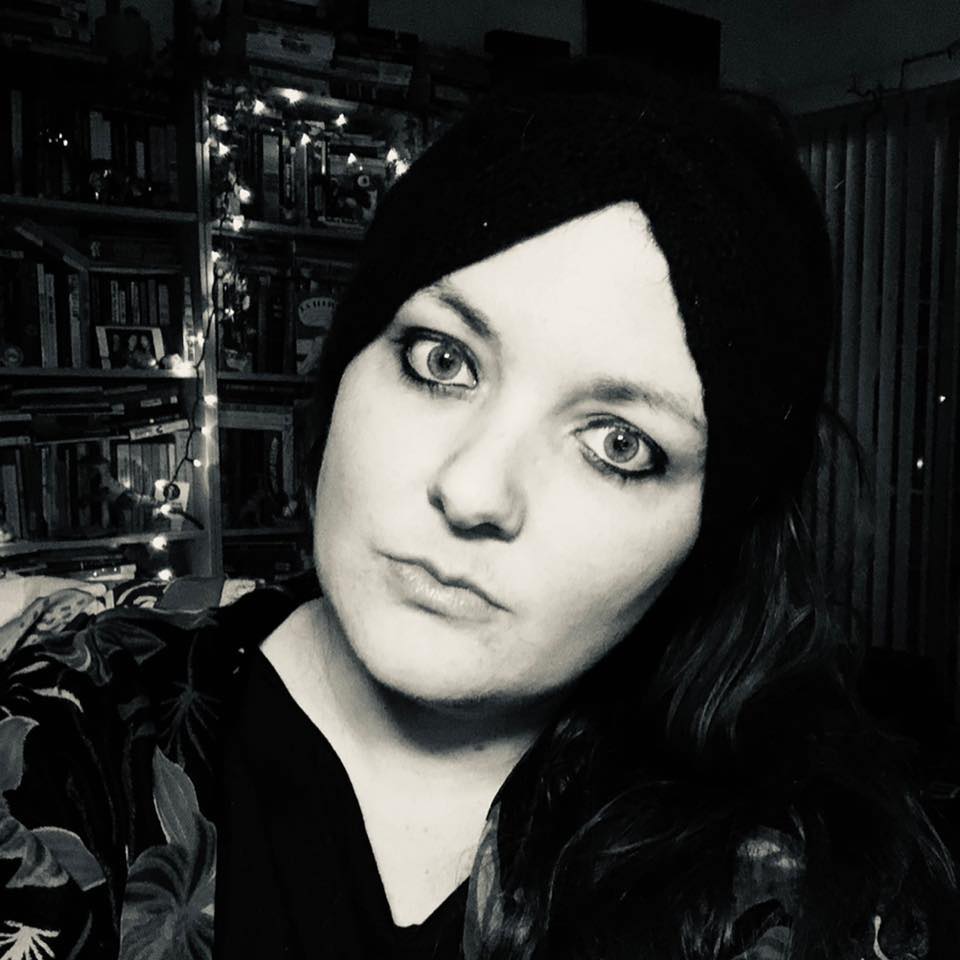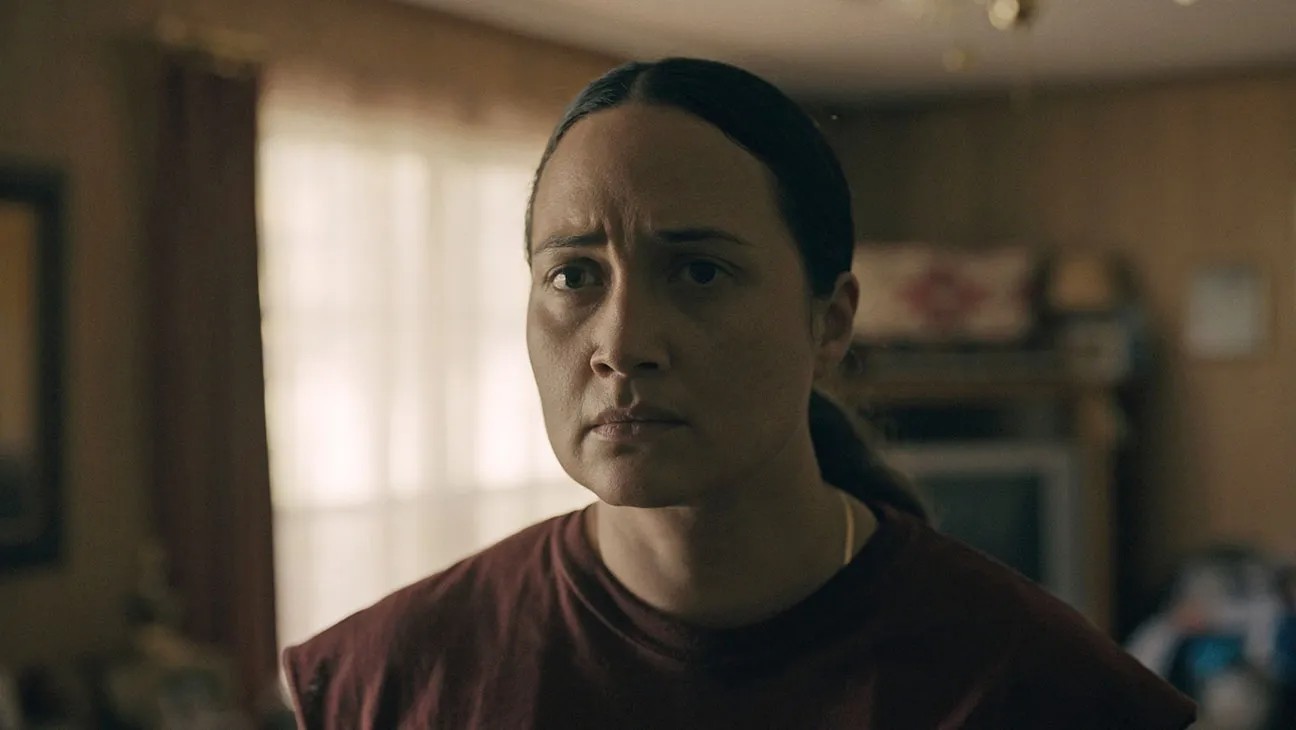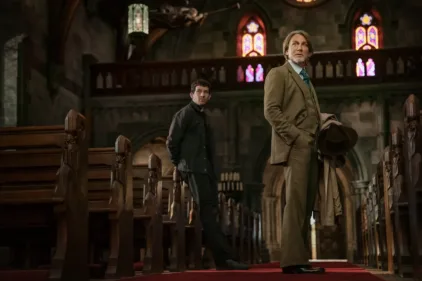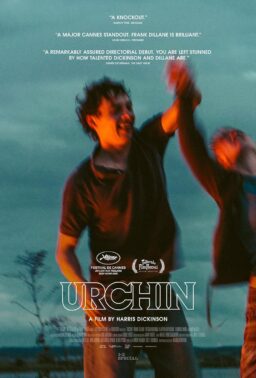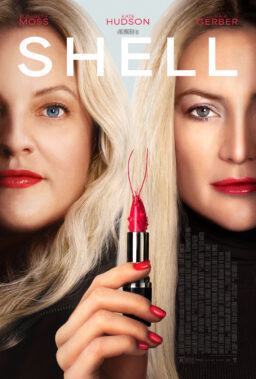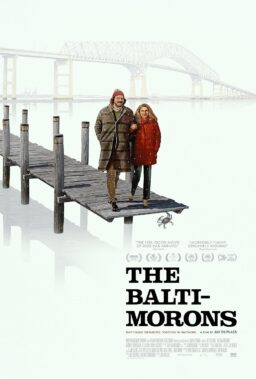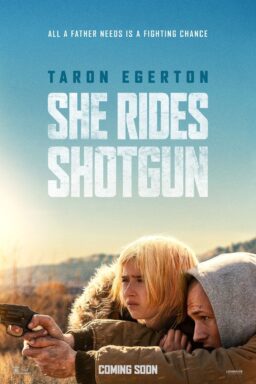Since their remarkable breakthrough role as a soulful, lonely rancher in Kelly Reichardt’s “Certain Women,” Lily Gladstone has left an indelible mark on cinema and television. Mostly working with writer-directors on small, personal projects, they’ve blazed an invaluable trail for Indigenous and queer representation within the medium with their cerebral, meditative, and singularly beguiling screen presence. Coming off of their history-making Best Actress Oscar nomination as Mollie Kyle in Martin Scorsese’s epic “Killers of the Flower Moon,” Gladstone has several new projects this year that share the actor’s strong, clear vision for what kind of stories they hope to have a part in telling.
Debuting at the Tribeca Film Festival in June, Gladstone reprises the role of Tana in “Jazzy,” co-writer and director Morrisa Maltz’s follow-up to last year’s “The Unknown Country,” for which the actor won the Gotham Independent Film Award for Outstanding Lead Performance. Although “Fancy Dance,” from writer-director Erica Tremblay, premiered at Sundance in 2023, the drama, in which Gladstone plays an aunt desperate to keep her niece with after her sister goes missing on Seneca–Cayuga Nation Reservation, will finally be released in theaters and streaming later in June by Apple TV+. Lastly, after several supporting roles on acclaimed television series like “Billions” and “Reservation Dogs,” Gladstone has a lead role, along with Riley Keough, in the Hulu true-crime miniseries “Under the Bridge.” Developed by Quinn Shephard from the book of the same name by Rebecca Godfrey, Gladstone plays Cam, a police officer investigating the disappearance of a troubled teenage girl on Vancouver Island.
Speaking over Zoom, RogerEbert.com spoke to Gladstone about similarities – and differences – between her characters in “Under the Bridge” and “Fancy Dance,” representing queerness from a rural lens and the process of maintaining a character’s emotional arc over a long period of time.
This interview has been edited for length and clarity.
I couldn’t help but notice many similarities—and many differences—between your character Cam in “Under the Bridge” and Jax from “Fancy Dance.” Both characters investigate the disappearance of women or girls on the margins.
And one is a cop and one is a criminal.
Exactly. How did you get into the psychology of these characters who are so different, yet their core journey is the same?
I was shooting “Fancy Dance” when I was approached about and accepted the role in “Under the Bridge.” So it’s interesting how the characters overlap in that sense but are, like I said, a cop and a criminal. I don’t think Cam would be willing to admit that she’s driven by love, and clearly, Jax is driven by love. They’re both, in some ways, launching their own investigations because nobody else will help these girls.
I know Reena Virk’s case changed the way that police forces in Canada, the municipal police particularly, approach missing persons cases. This had a ripple effect throughout missing Indigenous women’s cases in Canada. I feel like Cam understood this case and had an instinct for it because it resonated with her more than she even realized. There was one point in the whole arc, when Cam is making an arrest and Becca (Riley Keough) shows up and tries to intervene. It’s the scene where you really see that Cam and Becca have been working toward the same end but from starkly different places.
Rebecca Godfrey felt she saw something of herself in Warren Glowatski (Javon “Wanna” Walton), where Cam saw something of herself in Reena (Vritika Gupta). There’s something about the irreconcilability and the impossible place that that relationship comes to at that moment. Even though Cam does come to see the irony in it. Cam’s wearing the uniform of law enforcement. She herself was somebody who was sucked into the system as a child. And she gets to a point where she has to confront that.
There’s also the theme of adoption in both “Under the Bridge” and “Fancy Dance.” That one more explicitly jumped out at me and appealed to me about these two characters. Jax in “Fancy Dance” is fighting to keep her niece under her care, while also searching for her sister. The big thing is Roki (Isabel DeRoy-Olson) and not losing Roki to, not just the system, but losing Roki to a family that she knows will not uphold who she really is and where she comes from. Her connection to the culture, family, and communities is so precious and irreplaceable, and it’s suddenly being replaced. And that is Cam’s story.
In Canada, they called it the “Sixties Scoop.” In the States, this was such an issue that an act of Congress had to be passed called the Indian Child Welfare Act, just to keep our kids in our own communities. You see that in “Fancy Dance” when Roki is placed under family care. But for Jax, her first reaction is, “You can’t do this. You’ve got to keep Indians with family first. That’s what that law says.”
I thought it was interesting to have that conversation between two characters coming from such different circumstances and having such a different relationship with them. Both have a very redemptive path within that. Both have made imperfect choices. Both have some pretty major flaws. But ultimately, both are driven by love and the necessity to protect women.

Do you feel like in your choice of roles you have a specific lens through which you are trying to express yourself?
I think a lot of these characters choose me. Both Jax and Cam were written for me. “Fancy Dance” writer-director Erica Tremblay and Quinn Shephard, who developed “Under the Bridge,” were enamored with “Certain Women” and met me through that performance. I wouldn’t necessarily say Jamie, the rancher in that film, is a powerful protective force, but she is certainly a caring one and an isolated, strange one. You’re not really sure what she’s about. I had my own story. Most came from Maile Meloy’s treatment in the original story, where the character was a man. So, there was something that both Quinn and Erica saw in me.
Erica and I made [the short film] “Little Chief” first. It’s a version of her mom. It’s her mom’s story from when she was teaching at Turkey Ford Elementary in Wyandotte, Oklahoma. Then, from working with Erica on “Little Chief,” she asked if she could write a feature for us to do together. She had a vision of the character before; she had a vision of the story and how she wanted to create a space for me. So, it’s really funny that Quinn saw something similar to what Erica saw and created Cam around the same time.
One overarching theme is that you often play queer characters in rural settings. And as a little queer kid who grew up in a rural setting, I love that that’s a thing that’s being represented in media today. How do you feel about being one of the main players in this wave of rural queer films?
It’s kind of funny that it’s happened that way, too. Because the rancher wasn’t self-aware about it. Kelly and I didn’t want to make it so clearly just an infatuation story. We talked about it being a teacher crush. We talked about it being drawn to a person. There’s one thing in Maile Meloy’s piece about the character Chad, as he was named in it, that goes, “He thought he ought not to spend so much time alone. He got afraid of something in himself.” Some of those aspects flipped when the character’s gender changed. Their circumstances changed. You must have a more Kelly Reichardt approach to that scene and that dynamic. Of course, when you’re watching it, the rancher might not be self-aware, but whoever’s seeing the scene and seeing that crush and that infatuation is interpreting it as they will.
Playing it, I wasn’t necessarily allowing Jamie to know a lot of things about herself. It was a moment when things were being stirred up within her. It’s that isolation culture, a little bit of that ranching culture. It’s also one of those things where, I don’t know if you experienced this in a rural sense, but I think if you’re in a rural community that happens to also be in the Bible Belt, you might have a different experience as a queer person.
In 2014, Out Magazine listed Texas as one of the most queer-friendly places to live because there’s such an expanse of land there. The legislation certainly is not friendly, not to women either. Not for hardly anybody, except for one small demographic in this country. But the culture of living in a land that calls the shots, you know, like the whole “nature bats last” saying, you learn to be very reliant on your neighbors and be very live and let live. If you need something from your neighbor, you’re there for them because you’ll need them too.
I think that was kind of the delusion that very much drove the rancher in “Certain Women,” too. Jamie thinks, “This girl (Kristen Stewart) is driving on those roads. I know what those roads are. She’s hungry, she’s tired, I just want to make sure she’s okay.” That’s something very protective about her. That might be the pulse that Quinn picked up on. This protective element in this queer attraction. But, you know, I hope Jamie, at some point in her life, got a little bit more clarity on it and not just go right back into the barn with the horses.
I’m not really sure how it became a common thread in a lot of characters that I play, other than it’s a space that I think is really, really valuable and important to consider and to have these nuanced stories.
I think there’s a perception from the city that the country is a very hostile environment. And that’s not the case, necessarily. There may be a lack of worldliness in some aspects. But there’s a rich tapestry of a whole-ass rainbow in rural places. I particularly like, with Indigenous characters, having conversations around gender fluidity, gender roles, and different worldviews.

Is your process different living with the character for the length of time it takes to make a TV show versus the length of time it takes to make most films? Does your process shift at all? Or do you approach each character in the same way?
I think the process of character development is largely the same. “Killers of the Flower Moon” was shot basically like a series. I was in Oklahoma for that as long as I was in Vancouver working on “Under the Bridge.” I think it’s just a different process of tracking the arc and eventually knowing where you will land. You don’t want to tip your hand too early, whether it’s a film or series, in either case.
[On television], I like that there’s so much conversation happening away from your individual character. When there are so many tracks that take, so many episodes to play out, you get a really broad sense of the world that you’re shaping. So I think, in a way, maybe scenes and choices and beats can breathe a little bit more in a series. Where in a film, every scene you don’t have the same amount of real estate. Even in a movie that’s three and a half hours long [laughs], you don’t have the same amount of real estate to flush out these arcs.
I don’t know that they’re entirely different. This is the first time in a television show that I’ve had to develop a character over a whole season. Guest star appearances are great because you still develop a full character, but you just drop in for a little nugget of a bigger tapestry.
I would probably compare it more closely to having a theatre contract. With a stage play the trick is keeping the discoveries and the momentum fresh and new and growing when it’s the same story, repeated over a long run. The trick is to sustain it over the run. Rehearsal is the fun, creative time, and then, in that lens, that’s what you’re shooting. It’s like you’re shooting the rehearsal while making a TV show. Whereas in a play, you would be practicing and placing all of that and then having a piece that, and then you get to share it over and over and over again.
Is there something that you do between roles or maybe while you’re filming that you use to recharge yourself?
I spend time with my dog. I like spending time in the garden with my houseplants. I’m a plant mom. I sleep a lot. I try to catch up on my watchlist and like my reading list, and maybe try to be a good friend.
